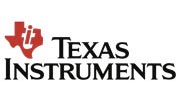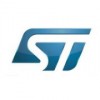Analog Design Engineer
20+ Analog Design Engineer Interview Questions and Answers

Asked in Texas Instruments

Q. What is the frequency response when a capacitor is added in parallel to a resistor?
Adding a capacitor in parallel to a resistor changes the frequency response of the circuit.
The cutoff frequency of the circuit decreases as the capacitance increases.
The circuit becomes a high-pass filter with a -20dB/decade slope above the cutoff frequency.
The impedance of the capacitor decreases as frequency increases, allowing more current to flow through the circuit.
The resistor and capacitor form a voltage divider, affecting the gain of the circuit at different frequenci...read more

Asked in Texas Instruments

Q. Draw a Lowpass filter (RC)
An RC lowpass filter allows low-frequency signals to pass while attenuating higher frequencies.
Components: Resistor (R) and Capacitor (C) in series.
Output taken across the capacitor.
Cutoff frequency (fc) is determined by fc = 1/(2πRC).
Common applications: Audio processing, signal conditioning.
Example values: R = 1kΩ, C = 100nF gives fc ≈ 1.59 kHz.
Analog Design Engineer Interview Questions and Answers for Freshers

Asked in Texas Instruments

Q. Describe a tricky diode-based network question, considering both ideal and non-ideal diode cases.
Understanding diode networks involves analyzing ideal vs non-ideal behaviors in circuits.
Ideal diodes have zero forward voltage drop and infinite reverse resistance.
Non-ideal diodes exhibit a forward voltage drop (e.g., 0.7V for silicon) and leakage current.
In an ideal diode network, current flows freely in one direction without loss.
In a non-ideal diode network, consider the effects of temperature on diode performance.
Example: In a rectifier circuit, ideal diodes would yield...read more

Asked in Texas Instruments

Q. What is the frequency response when a resistor is added to a capacitor?
Adding a resistor to a capacitor changes the frequency response of the circuit.
The cutoff frequency of the circuit decreases with increasing resistance.
The circuit becomes more attenuative at higher frequencies.
The time constant of the circuit increases with increasing resistance.
The circuit becomes more stable and less prone to oscillation.
Example: A low-pass filter with a 10uF capacitor and a 1kohm resistor has a cutoff frequency of 15.9Hz.

Asked in Texas Instruments

Q. You have 1000 bottles of wine, one of which is poisoned. You have a group of test subjects to determine which bottle is poisoned. How can you identify the poisoned bottle using the minimum number of test subjec...
read moreIdentify one poisoned bottle among 1000 using minimal testing with binary representation.
Use binary representation of bottle numbers (1-1000) to label them.
Assign each bottle a unique binary code (e.g., 1 = 0000000001, 1000 = 1111101000).
Test each bottle by using a group of testers, where each tester drinks from specific bottles based on binary digits.
If a tester dies, their binary position indicates which bottles are poisoned.

Asked in Texas Instruments

Q. Explain T-flip flop mod3 counters and reset.
T-flip flop mod3 counters are used for counting in digital circuits, resetting after reaching a count of 3.
A T-flip flop toggles its state on each clock pulse when T=1.
For a mod3 counter, the states are 00, 01, and 10, representing counts 0, 1, and 2.
After reaching the count of 2 (10), the next toggle resets the counter back to 0 (00).
Example: If T=1, the sequence of outputs will be 00 -> 01 -> 10 -> 00.
Analog Design Engineer Jobs




Asked in Texas Instruments

Q. Output Response of RLC circuits
The output response of RLC circuits is the behavior of the circuit's output voltage or current over time.
The output response depends on the values of the resistance (R), inductance (L), and capacitance (C) in the circuit.
RLC circuits can exhibit different types of responses, such as overdamped, underdamped, or critically damped.
The response can be analyzed using differential equations or Laplace transforms.
For example, an overdamped RLC circuit will have a slow and smooth res...read more

Asked in Texas Instruments

Q. What is the effect of temperature on leakage current?
Temperature has a significant effect on leakage current in analog circuits.
Leakage current increases with temperature due to increased carrier generation and diffusion.
Higher temperatures can cause increased leakage current through reverse-biased junctions.
Temperature coefficients are used to quantify the change in leakage current with temperature.
Thermal management techniques are employed to minimize the impact of temperature on leakage current.
Example: In a CMOS transistor,...read more
Share interview questions and help millions of jobseekers 🌟


Asked in Texas Instruments

Q. Why is a cascade structure used?
Cascade structure is used to improve gain, bandwidth, and linearity of amplifiers.
Cascade structure combines multiple amplifier stages to achieve higher overall gain.
Each stage can be optimized for a specific frequency range, improving bandwidth.
Cascade structure also reduces distortion and improves linearity.
Examples include cascode amplifiers and differential amplifiers.
Cascade structure is commonly used in high-frequency and high-gain applications.

Asked in Intel

Q. Describe the frequency response of a single-stage amplifier and the Vout curve with Vin variation.
Frequency response of a single-stage amplifier can be represented by a vout curve with vin variation.
Frequency response of a single-stage amplifier shows how the output voltage changes with input voltage at different frequencies.
The vout curve with vin variation typically shows a flat response at low frequencies and a roll-off at higher frequencies.
The frequency response can be characterized by parameters like bandwidth, gain, and phase shift.
Example: In a common-source ampli...read more

Asked in Intel

Q. DC to high frequency variation for a diff amplifier with bypass cap in the middle
The DC to high frequency variation for a differential amplifier with a bypass capacitor in the middle can be analyzed by considering the impact on the amplifier's frequency response.
The bypass capacitor helps to maintain a stable DC operating point by providing a low impedance path for AC signals while blocking DC.
At low frequencies, the bypass capacitor acts as an open circuit, allowing the differential amplifier to function normally.
At high frequencies, the bypass capacitor...read more

Asked in Texas Instruments

Q. Effect of opamp's bandwidth
The bandwidth of an opamp affects its ability to amplify high-frequency signals.
Opamp bandwidth determines the range of frequencies it can amplify effectively.
A higher bandwidth allows the opamp to amplify higher frequency signals accurately.
A lower bandwidth limits the opamp's ability to amplify high-frequency signals.
Opamp bandwidth is typically specified in terms of the -3dB frequency.
Bandwidth can be improved by using compensation techniques or selecting opamps with highe...read more

Asked in Texas Instruments

Q. Complex RC circuits
Complex RC circuits are circuits that contain resistors and capacitors in a series or parallel configuration.
The time constant of a complex RC circuit can be calculated using the product of resistance and capacitance.
Complex RC circuits can be used in filters, oscillators, and timing circuits.
The behavior of a complex RC circuit can be analyzed using circuit analysis techniques such as Kirchhoff's laws and nodal analysis.
Asked in NXP Semiconductors

Q. CMOS circuit and design along with VTC characteristics
CMOS circuits are widely used in integrated circuits for their low power consumption and high noise immunity. VTC characteristics show the relationship between input and output voltage.
CMOS circuits consist of complementary pairs of p-type and n-type MOSFETs, allowing for low power consumption and high noise immunity.
VTC (Voltage Transfer Characteristic) shows the relationship between input and output voltage in a CMOS circuit.
VTC characteristics typically exhibit a sharp tra...read more

Asked in Modernize Chip Solutions

Q. Current Mirror Cascode Amp and it's impedance
Current Mirror Cascode Amp is a configuration where a current mirror is used in the cascode amplifier to improve performance.
Current mirror cascode amp combines the benefits of current mirrors and cascode amplifiers.
It provides high input impedance, low output impedance, and high gain.
The impedance of the current mirror cascode amp is determined by the impedance of the current mirror and the cascode amplifier.
The impedance can be adjusted by changing the biasing of the transi...read more

Asked in Synapse Design

Q. CMOS implementation of logic gates
CMOS implementation of logic gates involves using complementary pairs of MOSFETs to create digital circuits.
CMOS logic gates use both NMOS and PMOS transistors to achieve low power consumption and high noise immunity.
The output of a CMOS gate is either connected to VDD or GND through a complementary pair of transistors.
CMOS gates can be cascaded to create more complex digital circuits, such as adders and multipliers.
Examples of CMOS logic gates include NAND, NOR, XOR, and inv...read more

Asked in Texas Instruments

Q. Rc network with constant current source
An RC network with a constant current source is used to create a voltage output that is proportional to the input current.
RC network consists of a resistor (R) and a capacitor (C) connected in series or parallel.
Constant current source ensures a steady current flows through the network.
The voltage output across the RC network is determined by the time constant (RC) and the input current.
This configuration is commonly used in signal processing circuits and filters.
Asked in MosChip Technologies

Q. What is a MOS capacitor?
A MOS capacitor is a metal-oxide-semiconductor structure used in integrated circuits for storing charge.
Consists of a metal gate separated from a semiconductor substrate by a thin insulating layer
Used in various applications such as DRAM cells and analog circuits
Capable of storing charge and modulating the capacitance based on the voltage applied
Asked in Renesas Electronics India

Q. Explain the operation of an RC circuit.
An RC circuit consists of a resistor and a capacitor connected in series or parallel, used for filtering, timing, and signal processing.
RC circuit operation is based on the charging and discharging of the capacitor through the resistor.
When a voltage is applied to the circuit, the capacitor charges up to the applied voltage through the resistor.
The time constant (RC) determines how quickly the capacitor charges or discharges.
RC circuits are commonly used in low-pass filters, ...read more
Asked in Aritrak Technologies

Q. RC Filters Gain Frequency Response
RC filters have a gain frequency response that depends on the values of the resistor and capacitor.
RC filters are used in analog circuits to filter out specific frequencies.
The gain of an RC filter is determined by the ratio of the resistor and capacitor values.
The frequency response of an RC filter shows how the gain changes with frequency.
Higher resistor values result in lower cutoff frequencies, while higher capacitor values result in higher cutoff frequencies.
RC filters c...read more
Asked in MosChip Technologies

Q. What is a mirror circuit?
A mirror circuit is a circuit configuration where two transistors are connected in a way that their characteristics are mirrored.
Consists of two transistors with their bases connected together
Used to replicate a current or voltage with high accuracy
Commonly used in current mirrors and voltage mirrors

Asked in STMicroelectronics

Q. Why STMicroelectronics?
STMicroelectronics is a leading global semiconductor company known for its innovative analog design solutions.
STMicroelectronics has a strong reputation for producing high-quality analog products.
The company offers a wide range of analog ICs for various applications such as power management, signal conditioning, and data conversion.
STMicroelectronics has a history of successful collaborations with industry leaders in various sectors.
The company's commitment to innovation and ...read more

Asked in Modernize Chip Solutions

Q. What is the Common Mode Range in a Differential Amplifier?
Common mode range is the range of input common-mode voltage that can be applied to a differential amplifier without causing distortion.
Common mode range is important for ensuring proper operation of a differential amplifier.
It is typically specified in the datasheet of the amplifier.
The common mode range is limited by the supply voltage and the input stage of the amplifier.
For example, if a differential amplifier has a common mode range of -0.5V to 0.5V, it means that any inp...read more

Asked in Bosch Global Software Technologies

Q. What is VLSI?
VLSI stands for Very Large Scale Integration, a technology for creating integrated circuits by combining thousands of transistors.
VLSI technology allows for the integration of millions of transistors on a single chip.
Common applications include microprocessors, memory chips, and digital signal processors.
Examples of VLSI devices are CPUs in computers and ASICs used in specific applications.
VLSI design involves various stages including specification, design, verification, and ...read more
Asked in Renesas Electronics India

Q. Draw a waveform for a diode.
A diode waveform typically shows a voltage drop when forward biased and no current flow when reverse biased.
Forward biased: voltage drop across diode, current flows
Reverse biased: no current flow, diode acts as open circuit
Asked in Apraava Energy

Q. What is frequency?
Frequency is the number of occurrences of a repeating event per unit of time.
Frequency is measured in Hertz (Hz)
It is commonly used in signal processing, physics, and engineering
For example, the frequency of a sound wave determines its pitch

Asked in Capgemini Engineering

Q. Why semiconductors?
Semiconductors are at the heart of modern technology, enabling the creation of electronic devices and systems.
Semiconductors are essential components in electronic devices such as computers, smartphones, and televisions.
They allow for the control and manipulation of electrical signals, enabling the functionality of these devices.
Advancements in semiconductor technology drive innovation in various industries, from automotive to telecommunications.
Working in the semiconductor f...read more
Asked in PRSSGroup

Q. What is Digital?
Digital refers to data represented in discrete values, typically using binary code, enabling efficient processing and storage.
Digital systems use binary (0s and 1s) to represent information.
Examples include computers, smartphones, and digital cameras.
Digital signals are less susceptible to noise compared to analog signals.
Digital data can be easily compressed and encrypted for storage and transmission.
Asked in NXP Semiconductors

Q. Nmos design and working
NMOS (N-channel Metal-Oxide-Semiconductor) is a type of MOSFET (Metal-Oxide-Semiconductor Field-Effect Transistor) that uses n-type semiconductor for the channel.
NMOS transistors are used in digital and analog circuits for switching and amplification.
In NMOS design, the gate is made of metal, the insulator is made of oxide, and the semiconductor is n-type.
NMOS transistors operate by applying a voltage to the gate terminal to control the flow of current between the source and ...read more
Interview Questions of Similar Designations
Interview Experiences of Popular Companies








Reviews
Interviews
Salaries
Users

















